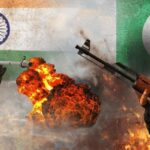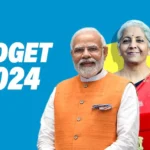Narendra Modi: From Humble Beginnings to Global Leadership
Introduction
Narendra Modi, the 14th Prime Minister of India, embodies a remarkable journey of transformation and leadership. From his modest roots in Vadnagar to becoming the head of the world’s largest democracy, Modi’s story is both inspirational and impactful. This blog explores his early life, significant milestones, and future aspirations, offering a comprehensive view of his political and personal evolution.
Early Life and Humble Beginnings
Born on September 17, 1950, in Vadnagar, Gujarat, Narendra Modi grew up in a modest household. His father, Damodardas Mulchand Modi, ran a tea stall, where young Narendra often assisted. This period of his life taught him the values of diligence and perseverance, shaping his future endeavours.
Political Genesis
Modi’s political journey began in his youth with the Rashtriya Swayamsevak Sangh (RSS), where he served as a pracharak (campaigner) during the 1970s. His activism during the Emergency period of 1975, under Indira Gandhi’s rule, highlighted his emerging leadership and organizational skills, laying the groundwork for his political career.
Ascension in the Bharatiya Janata Party (BJP)
Joining the Bharatiya Janata Party (BJP) in the 1980s, Modi quickly rose through its ranks, demonstrating strategic prowess and dedication. His appointment as Chief Minister of Gujarat in 2001 marked a pivotal moment in his career. His leadership during this period brought significant economic and infrastructural advancements to the state.
Gujarat Chief Minister: A Period of Transformation
From 2001 to 2014, Modi’s tenure as Gujarat’s Chief Minister was marked by robust economic growth and development. The state became an industrial hub, attracting global investments through initiatives like the Vibrant Gujarat Summit. Despite the monetary progress, Modi’s tenure was also marred by controversies, particularly the 2002 Gujarat riots.
Prime Ministerial Tenure: Key Initiatives and Policies
In 2014, Modi’s leadership led the BJP to a historic victory in the general elections, and he became the Prime Minister of India. His campaign, focusing on development and progress, resonated with many voters. Key initiatives during his tenure include:
- Make in India: Aimed at boosting domestic manufacturing and creating jobs.
- Digital India: Focused on enhancing internet connectivity and digital literacy.
- Swachh Bharat Abhiyan: A nationwide cleanliness and sanitation campaign.
- Goods and Services Tax (GST): Simplified the tax structure to improve business ease.
Modi’s foreign policy has also garnered attention, with efforts to strengthen India’s global position through strategic partnerships and active engagement in international forums.
Challenges and Criticisms
Modi’s leadership has faced challenges, including economic issues like job creation and agrarian distress. The handling of the COVID-19 pandemic and controversial policies such as the Citizenship Amendment Act (CAA) have sparked widespread debate and criticism.
Future Vision
Modi’s vision includes transforming India into a global economic powerhouse. The Atmanirbhar Bharat (self-reliant India) initiative aims to reduce import dependency and enhance domestic production. Continued focus on infrastructure, healthcare, and education will drive India’s future growth.
Conclusion
Narendra Modi’s evolution from a tea seller in Vadnagar to the Prime Minister of India reflects his resilience and leadership. His tenure has seen both achievements and challenges. As India progresses, Modi’s vision and policies will play a crucial role in shaping the nation’s future, making his leadership a significant chapter in India’s history.
Narendra Modi, Prime Minister of India, Gujarat Chief Minister, BJP, Make in India, Digital India, Swachh Bharat Abhiyan, GST, Atmanirbhar Bharat, Indian politics.







